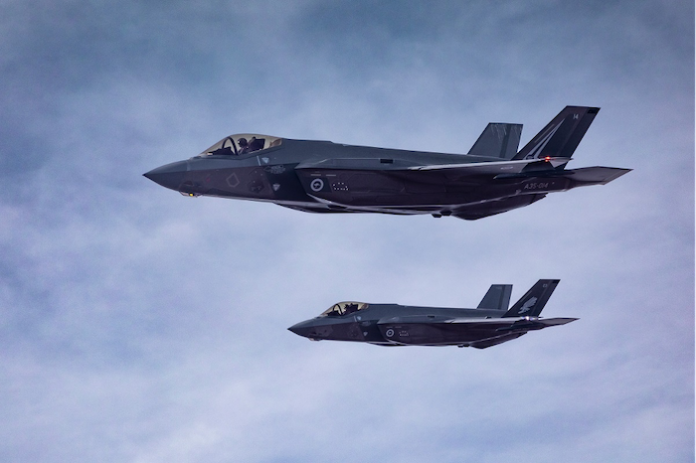
By David Uren*
Defence will continue to operate within a tight financial straightjacket as it executes the massive redirection demanded by last year’s Defence Strategic Review and the AUKUS program, with cuts to existing projects expected to make a greater contribution to new acquisitions than fresh government funding. The Australian Strategic Policy Institute. The Strategist.
The government expects that savings from cancellations will deliver $73 billion towards the total of $330 billion to be spent on new equipment over the coming 10 years. So cancellations will cover 22 percent of the total cost of acquisitions in the period, including the new nuclear-powered submarines.
And that contribution from eliminating or scaling back equipment purchases compares with the $50 billion that the government says it is adding to acquisition funding over the decade.
The Defence Strategic Review, led by former defence force chief Angus Houston and former defence minister Stephen Smith, was a radical document, declaring that the strategy behind Australia’s defence for the previous 50 years was no longer fit for purpose and calling for a sweeping overhaul of capabilities and force structure.
The review said more defence funding would be needed. ‘Defence spending must reflect the strategic circumstances our nation faces,’ it said.
Last year’s government budget, framed by the need to combat inflation, provided no additional money for defence over the four-year budget period, but Defence Minister Richard Marles extracted a new $30 billion commitment for 2027–28 to 2032–33 to help implement the review and the demands of AUKUS.
With the release last week of the National Defence Strategy and the Integrated Investment Program (the acquisition plan), Marles has responded to the review with a spending scheme that incorporates the major upgrades in naval and long-distance strike capability.
Fuller details of where cuts will be made should be in the forthcoming budget papers, but they include the cancellation of two large naval support vessels, cuts to upgrades of Canberra-based facilities, delaying purchase of another squadron of Lockheed Martin F-35 Lightnings, and last year’s 70 percent cut to the number of new infantry fighting vehicles.
Besides the submarine program, which will absorb between $53 billion and $63 billion over the next decade, a further $51 billion to $69 billion is being spent on new ships.
Spending on acquiring maritime capabilities will reach $125 billion over the next decade, which is 38 percent of the value of all acquisitions in the period. The 2020 Force Structure Plan, prepared and published before the AUKUS agreement, anticipated that 28 percent of acquisition spending would go to maritime capabilities.
It is a big shift in priorities. Acquisition spending for the air domain has fallen from 24 percent in 2020 to only 14 percent now. The share going to the land domain has dropped from 20 percent to 16 percent, though cyber has risen from 6 percent to 7 percent and space from 2 percent to 3 percent.
The distribution of defence spending between capability acquisition, sustainment and workforce, which has historically been about even, becomes much more focused on equipment purchases.
The share of spending on new capabilities will rise from 34 percent in 2024–25 to 44 percent by 2033–34, while sustainment drops from 34 percent to 30 percent and the workforce drops from 33 percent to 26 percent.
Over the next decade, spending on new equipment is expected to rise at an annual rate of 9 percent; meanwhile sustainment spending will grow at 5 percent a year and funding for the workforce at 4 percent a year.
The rate of growth in the Defence budget will begin to increase from 2027–28, which will be the final year in the four-year forward estimate period in next month’s budget. Figures in the new National Defence Strategy show annual increases in resourcing of about 5 percent over the next three years but then 11 percent in 2027–28, to $67.9 billion; the following year’s rise will be similar.
Marles said the government would spend $5.7 billion more over the next four years than was provided when the government came to office in 2022.
That includes $3 billion in 2027–28, a new $1 billion injection over the next four years included in the National Defence Strategy, and $1.7 billion for new ships, the latter part of $11.1 billion new outlays over a decade announced in February following an independent review of naval forces.
Last year’s budget included an additional $30.4 billion from 2027–28 to 2032–33. The passage of another year shifts the 10-year horizon out by a year and adds another $9 billion to the total, while the response to the naval review lifts outlays over the decade to $50 billion.
Marles says that by 2033–34 the annual defence budget will reach $100 billion, which would be equivalent to 2.4 percent of GDP. That is an increase from 2.0 percent in 2021-22 and a low of 1.6% in 2012-13, in the wake of the global financial crisis.
Overseeing such a significant re-shaping of defence planning, with a financial map incorporated in the budget, is a significant achievement for Marles. It follows his similar success in turning the ambitious but ill-defined AUKUS concept into an operational strategy last year. Now that the National Defence Strategy and plans for AUKUS have been set out, the challenge will be in the implementation.



